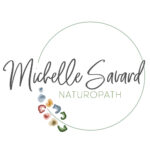- Calcium
- Rich in good quality protein
- Important source of vitamins B1, B2, B6, B12, A and D.
Possible Reasons to Avoid Milk
In this dairy-loving county where one fears being deported for speaking against gelato, we (dairy-lovers ourselves) cautiously wish to shed a bit of light on this controversial subject in order for you to be able to make educated decisions regarding the food you put on your table.
Dairy contains a number of important nutrients for the human body but after all of the transformation it goes through, many of its health benefits become lost. Most dairy cows live in meager conditions, are fed pesticide containing grains rather than grass and are regularly given antibiotics. When you consume dairy products you are also consuming what the cow ingests.
For the safety of the population milk is pasteurized, killing all possible pathogens but also killing many nutrients, beneficial bacteria and enzymes that help your body digest it. Homogenization is the subsequent process that prolongs shelf life and prevents cream from separating and rising to the top of containers. It breaks down molecules of fat into tiny particles that allow the enzyme xanthine
oxidase to pass intact into the bloodstream. The presence of this enzyme may cause heart disease. Dairy is considered one of the most common allergenic foods among children and adults.
Two forms of dairy sensitivities exist: allergy to the dairy protein (casein) and lactose intolerance. In fact, 75% of the world’s population is lactose intolerant.
Due to its high content in saturated fat and cholesterol, its consumption is linked to heart disease and certain cancers (including breast cancer). Consuming skim milk solves one problem but causes another: de-fatted milk inhibits the absorption of fat-soluble vitamins, such as vitamin A and D, which are essential to calcium intake.
Research is now showing that there is scant evidence that dairy products promote bone
health. The body more readily absorbs calcium from certain vegetal sources than dairy sources. In addition, animal protein consumption (dairy and meat) as well as milk’s high phosphorus content actually causes calcium loss, negating the perceived benefits.
Choosing Your Dairy Products
If you do choose to consume milk, your best bet is with organic, cow or goat’s milk. This means the milk you will be drinking is free of agri-chemicals and antibiotics. It also means that it has been
grass-fed rather than grain-fed. Grass-fed cows produce milk that not only is richer in omega-3 but also anti-oxidants; it contains 50% more vitamin E and 75% beta-carotene then non-organic milk.
It is even more important to look for organic products when you are consuming high-fat products such as cream or butter. Organic milk that has not been homogenized is even better.
Studies have shown that a natural substance in dairy fat, trans-palmitoleic acid may substantially reduce the risk of type 2 diabetes (and as a result, heart disease). Those who consume more
whole-fat dairy products have higher levels of trans-palmitoleic acid in their blood. Also, by replacing some of the calories in your diet over a period of time with yogurt and dairy products made from hole milk, one may also reduce their weight.
Cow Milk Alternatives
- Foods rich in calcium: sardines, canned salmon (with bones) dark leafy green vegetables, cabbage family vegetables, almonds, fruit juice, sesame seeds, calcium-fortified tofu, parsley, sea vegetables, blackstrap molasses, fortified cereals
- The calcium in vegetables from the cabbage family such as kale, mustard, collards, broccoli and bok choy is more absorbable than that of dairy
- Non-dairy beverages: soy, almond, kamut, oat, rice, hazelnut, buckwheat, coconut …
- For those intolerant to lactose: yogurt and fermented cheeses may be tolerable.
- Goat milk: does not need to be homogenized seeing as it is a naturally homogeneous
liquid, but is normally pasteurized. Its smaller protein and fat globules are easier to digest.
Important to remember: Some non-dairy milk substitutes are not fortified with vitamins and minerals while others are heavily fortified to simulate the nutritional profile of cow milk.
If you are looking for ways to reducing your dairy consumption there are numerous dairy-free recipes out there, all it takes is a bit of research and the will to try something new!
Michelle Savard, Naturopath and Rachel O’Kaine, Le Cordon Bleu Miami graduate, Chef, Culinarian and Food Writer http://anamericaninturin.wordpress.com/
References:
1. Butler, Graham. The Truth About Milk. Alive Magazine, April 2003:72-74
2. Sizer, Frances, Whitney, Ellie. Nutrition: Concepts and Controversies. Thomson Learning, 2006.
3. Gosselin, D. et Frappier, R. Le guide des bons gras. Maxam: 1999
4. World Health Organization: Recommendations for preventing osteoporosis.
5. Colbin, A. Food and Healing. Ballentine Books.New York: 1986
6. Rodet, Jean-Claude. Nutrithérapie: Produits Laitier et OEufs. Institut de Santé
Naturelle : 2007.
7. ‘The Cow’s Milk Controversy: It Ain’t What it Used to Be!.’ Healthy Living Magazine.
Dec 2011.


